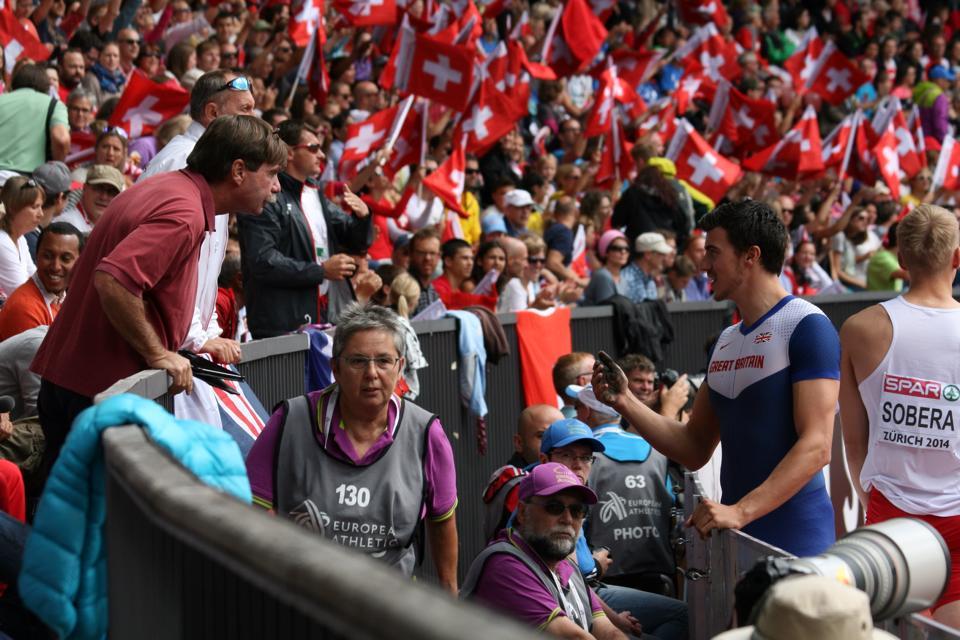It’s a truth universally acknowledged that words have power: The effective use of words can fast-track learning, build emotional connections, develop mutual trust, and bolster positive coach-athlete relationships.
Communication – the spectrum
When thinking about communication, many of us think in the context of words alone. However, the way we communicate with the world has many more layers than that. Consider the judgement we make about people based upon first impressions before they’ve even spoken: without necessarily realizing it, we scan what they are wearing, look at their posture, their body language, listen to their accent; the way they do or do not make eye contact. What we see and what we hear mesh together to communicate meaning to us, and we often make a judgement about that person accordingly.
For those of us on the front line in any leadership capacity, the ability to communicate effectively through a spectrum of methods – written, non-verbal, and verbal – is imperative. In addition, having the skill to do so in real-time without the convenient filter of the computer screen and delete button is vital: When we interact with others, words and actions cannot be taken back – time marches on and the deed is done.
“When we interact with others, words and actions cannot be taken back – time marches on and the deed is done.”
I’m a Coach – how does this apply to me?
Whilst I could wax lyrical on various themes surrounding interaction with others, the real question I want to address in this post is: How do we become better communicators to maximize our impact when coaching, leading, or teaching?
The below is a brief exploration into the traits commonly found in the most effective communicators…
Less is sometimes more
Effective communicators eliminate unnecessary padding from their message. In the same way that extraneous details in training schemes can reduce the efficacy of a program, embellishing our words with unnecessary terminology dilutes the message. Human beings are creatures of deletion, and have a limited short-term retention capacity: Make sure the message you’re trying to deliver doesn’t get drowned in your own noise.
Stop, look, listen, and observe
Knowing what not to say is a hallmark of effective communicators. Likewise, being a diligent and interested listener is the key to understanding others.
When listening to really great music, you will notice there are pauses – and the pauses are as much a part of the melody as the notes; the same is true of effective speakers. The best orators speak at a pace to suit the message, vary the pitch of their voice, and pause in appropriate places. Do not be afraid to count to 5 before answering a question, or before giving feedback in a coaching setting. Silence can be powerful.
Effective communicators provide context
When giving instruction, words have far greater impact if a framework of meaning is given to underpin the message. Make sure the athletes know why they are doing something and buy-in will be far higher: As Victor Frankl rightly said: “He who knows the “why” for his existence, will be able to bear almost any “how”.”

Stimulus and response
There is a gap between stimulus and response. The stimulus is what is said, the gap is where the listener takes cues from the verbal and non-verbal messages that are delivered, and forms meaning from those cues.
Mind that gap!
What is the physical and emotional impact of your words? Does the person bristle, or relax? How does their face change? The great communicators are also great observers of people! By the same token, they take the time to get to know their audience: For personal, cultural, language or other reasons, people may interpret the same communication (particularly written or verbal) differently. Being conscious of the style and sensitivities of your audience will help you to interpret how they found meaning from your communication.
Be present
Communication is a two way process. If an athlete is feeding back to you, and you are “listening” whilst simultaneously typing on your phone, tying your shoe, and sipping a Starbucks, they will not feel that their voice is valued. Look them in the eye and, try to figure out what they are telling you. Information is gold-dust in coaching – often the athlete is our best teacher – if we will listen to them! As Steven Covey so rightly said: “seek first to understand, then be understood”.

Exercise emotional control
What presses our buttons? What makes us mad? Knowing our stressors; whether they be locations, people, or words, allows us to internally control our response to situations, rather than being reactive and vocalizing something we later regret. Learning to create helpful internal dialogue, and processing our thoughts before we externalize them is a huge asset to any coach, especially so in pressure situations, when the temptation can be to verbally erupt.
Understand the impact of the inner monologue
Although the proverbial devil on our shoulder affects us all, this one is a real game changer for athletes. Self-talk and self-sabotage are huge factors to consider both in coaching, and in athlete development. Irrespective of the instruction we give as coaches, or the inspired pep talks we deliver to bolster confidence – if an athlete is listening to a faulty or negative internal dialogue instead of us, we as coaches are fighting a battle with an invisible third enemy.
Closing message – the power of agenda
Communication is a complex topic. Covering all possible dimensions in one short post is not possible, but there is one final point in addition to those made above that I’d like to highlight.
Irrespective of what we say, if people have a different agenda when we communicate with them; have deep-rooted fears or insecurities about the topic being addressed, or do not have professional or personal respect for us, the impact of our communications will be limited. Period.
Building positive relationships before communicating difficult topics, or directing well-intentioned feedback is critical. No one likes to be told their view is wrong, or hear their status-quo or beliefs may need to adjust; whether that be on a technical model, or a personal matter in terms of emotional management. Using communication wisely to build positive relationships and trust, before addressing the difficult topics is a far better strategy.
Finally – with each day that passes, we must be mindful of the reality that people change, and situations change. No two communications will be exactly the same – it is therefore our duty as coaches to be responsive to shifting circumstances and environments:
“The past is a foreign country – they do things differently there” L.P. Hartley – The Go Between


